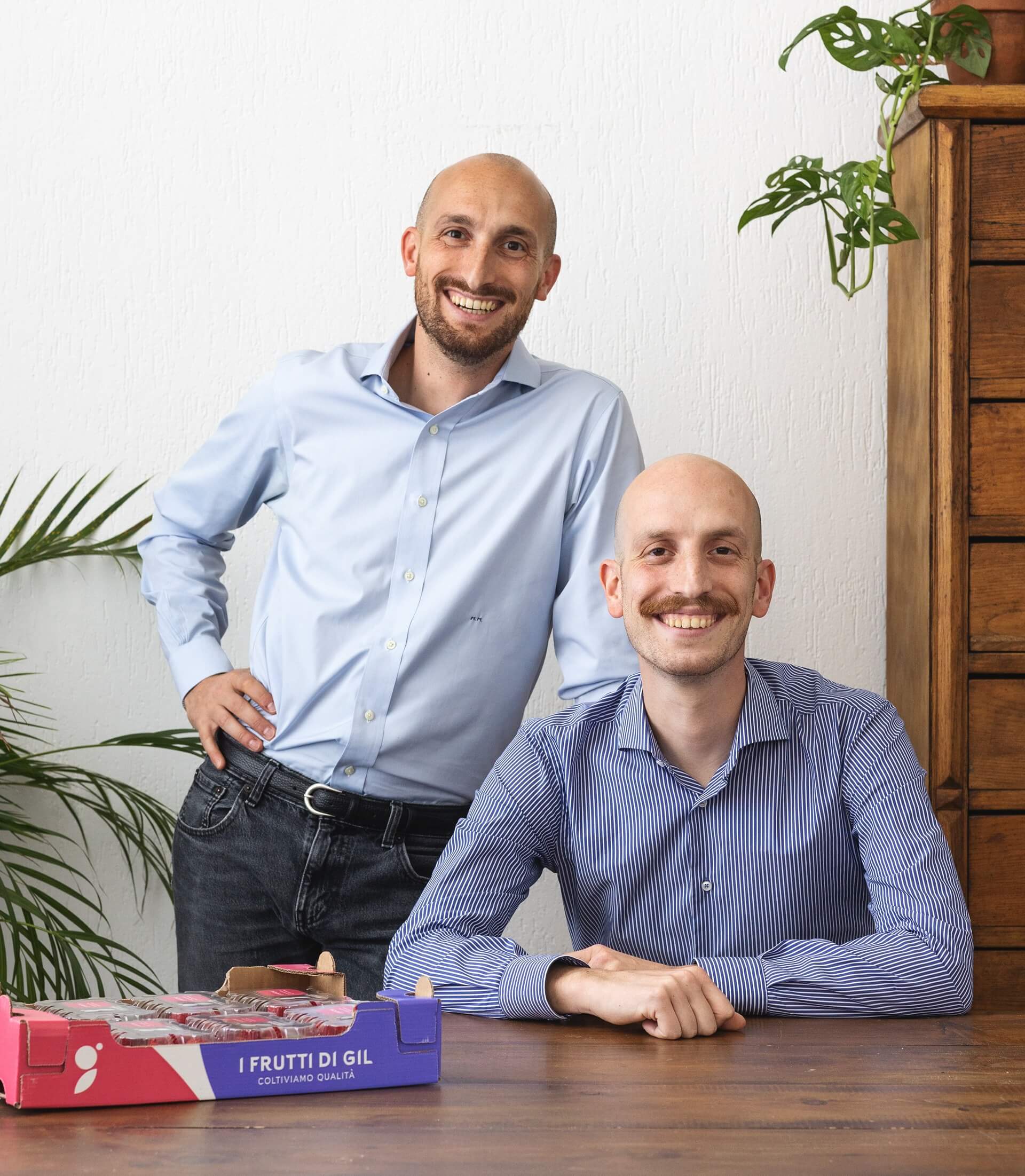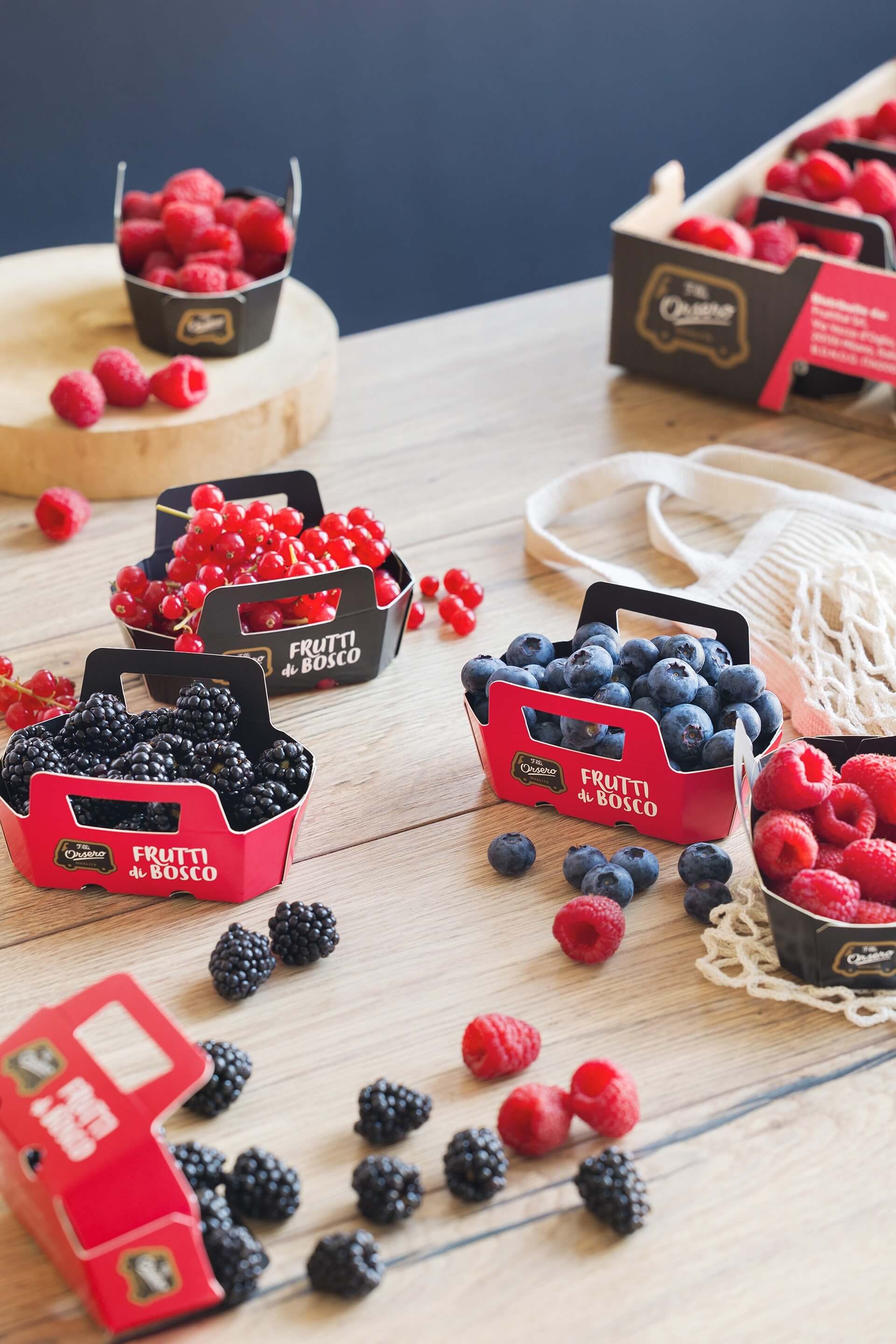The news has bounced from industry magazines to the general press. Recently, a supply chain joint venture for berries was established. It's called "I Frutti di Gil" and was born from the partnership between Orsero (a holding company of the eponymous Italian and international group, a leader in the Mediterranean Europe for the import and distribution of fresh fruit and vegetables, which holds 51%) and Cerchia Holding, headed by Matteo and Luca Molari, owners of G-Berries and Molari Società Agricola, specialists in varietal selection and nurseries for berries.
Matteo and Luca Molari, co-CEOs of I Frutti di Gil, analyze the latest trends in the sector for Italian Berry (data from Italian Berry-Gfk).

"The data shows a 55% increase in value that the berries segment has recorded over the last 4 years. A valuable result for all actors in the supply chain – they observe – But, delving deeper, some data indicate that there is potential for further growth, and urge us to do even better to meet the increasingly clear needs of consumers."
"This is the goal we set for our journey, because to increase penetration the first step is to continuously satisfy the consumer, and to do this, we start from a fundamental concept for us: a blueberry is not always a blueberry, and a raspberry is not always a raspberry."
The Example of the Blueberry
So let's take the blueberry, the reference that most drives the sector of berries. "It's not utopia for Italy to aim for consumption data similar to those of benchmark markets, such as the United Kingdom, where one in two families buys the product," say the entrepreneurs.
"The blueberry is a modern fruit, perhaps the most modern in the entire fruit and vegetable sector, and by working on segmentation, as well as quality, we can make a leap forward in the development of the reference."
"It will therefore be increasingly important to work on new formats that respond to different consumption moments and on varieties that offer additional consumption methods. And, moreover, pay attention to the development of different origins."
To aim to have quality product availability all year round, in fact, it is necessary not to get stuck on particular origins, thus having at hand solutions able to cope with contextual situations.
"And, finally, work on innovation, in which we believe and invest to always have cutting-edge machinery for our main warehouse in Verona," they recall.
The "Recovery" of Blackberries and Raspberries

Continuity in the quality level of the offer, taste stability, and programming in order to avoid stock shortages are instead the key elements to improve on blackberries and raspberries. "For these references – explain Matteo and Luca Molari – we work by structuring important production projects that include a varietal choice capable of extending the Italian production window."
"We invest in varietal improvement and, leveraging a significant network built over the years, we collaborate with established production partners in the main foreign origins with the goal, to be pursued in the coming years, of providing the greatest possible varietal uniformity even in the import window."
Red Currant in Crisis
According to the Molari brothers, the red currant market, however, has experienced a slowdown that has almost structural characteristics. "On the one hand, red currant is a complementary product, decorative but, on the other hand, it is a product that has significant management costs for distributors and, often, if imported, also very expensive for the consumer."
In short, the issue is delicate, it's a reference that requires specific work with attention, and that needs great collaboration between distributors and buyers.
Production, a Project Studied on Precise Lines
Product quality, project scalability, proximity of cultivation to processing plants, and complementarity of production windows. This is how production projects are thought out and built.
This means carefully choosing the varieties to cultivate, in geographical areas useful to extend as much as possible the national production window and to limit logistics, leveraging the Group's extensive network of warehouses.
"The projects started to date are located in 8 Italian regions, with a significant focus on Sicily, Puglia, Emilia-Romagna, and Alto-Adige. Specifically, in Sicily, we have recently activated two new plants, which add to the current producers, where the cultivation of all three references, blackberries, blueberries, and raspberries, will be developed."
"This novelty – they add – will be joined by new projects for the next season, located, among others, in Calabria and Liguria, an emerging area where we have already done an excellent job this year."
Quality Without Borders
The national supply chain is a central element of the project dedicated to berries, but "let's debunk the myth that Italian product is inherently better than imported product – clarify the CEOs of I Frutti di Gil – For this reason, even on the main origins of imported product we work by building solid and lasting partnerships, in some cases even with direct production."
Regarding the varietal theme, for some references such as raspberry, it has been decided to work even in import with the same varieties cultivated in Italy, in order to move towards varietal uniformity that allows the consumer to benefit from an equally uniform taste experience.
"The ultimate goal is to bring a quality product 52 weeks a year to the customer's table – they reiterate – For us, the right way to increase the category penetration and to consolidate the presence of I Frutti di Gil on the market."
In this perspective, the entrepreneurs emphasize the importance of segmentation, especially for the blueberry. "We have already seen some benefits thanks to the introduction of the open top pack, launched in the spring and unique in the Italian landscape – they conclude – We will do so soon with other projects that we have in store for the coming months."
Raffaella Quadretti









